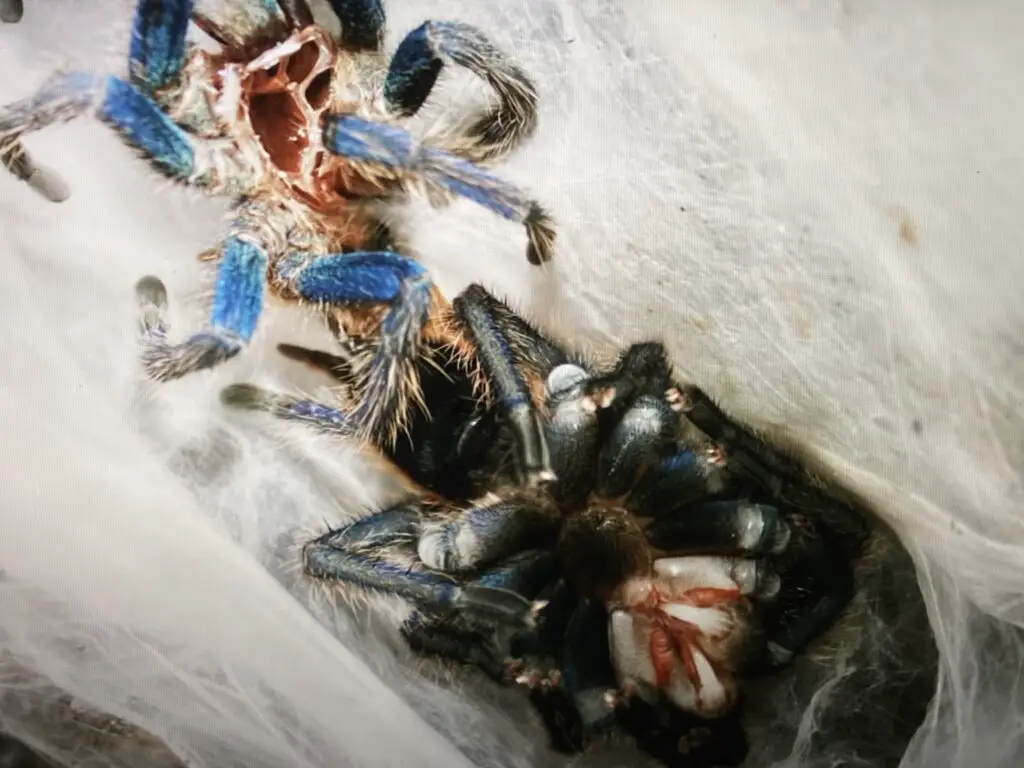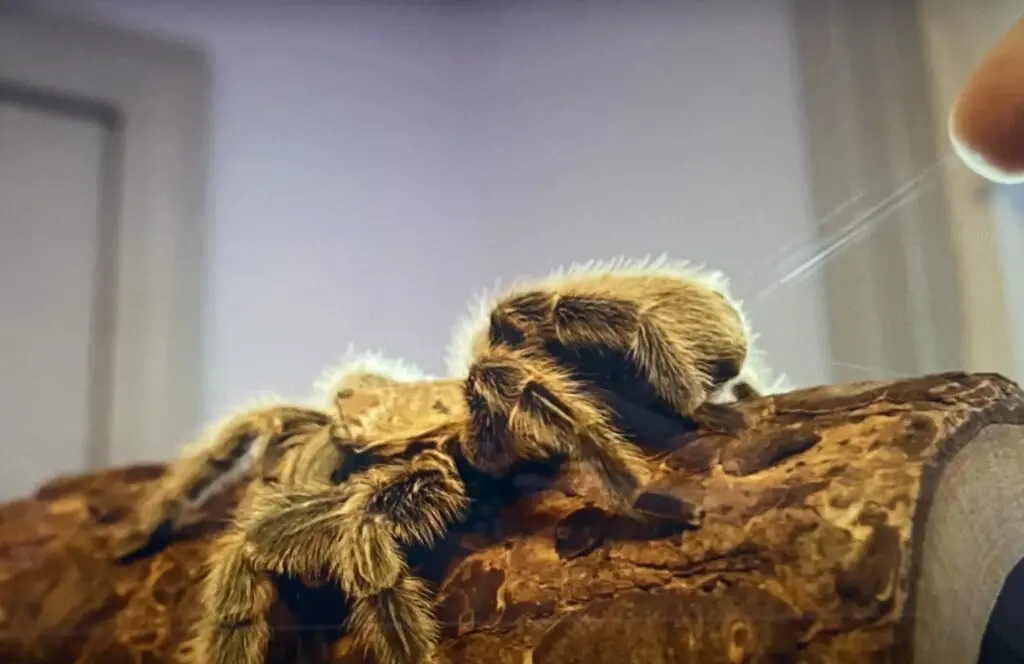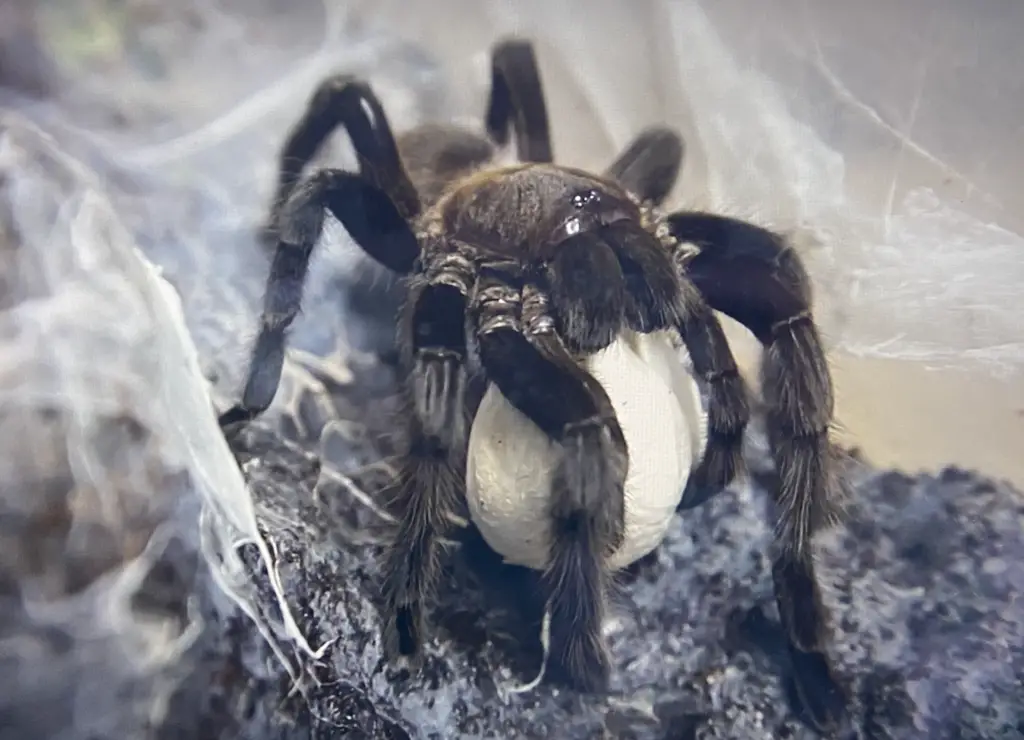All You Need to Know About Tarantula Molting and Care
Like all other species of spiders, tarantulas need to shed their exoskeleton to grow; this process, known as tarantula molting, allows them to form a new, larger exoskeleton. This exoskeleton is similar to a hard shell or outer covering, offering the tarantula protection and support, but it will become restrictive over time
This can be a stressful process for the tarantula and its owner. During a molt, a tarantula is incredibly vulnerable to injury because of its softer exoskeleton, so it hides somewhere safe and should not be disturbed. For new tarantula keepers, some signs of molting can be misunderstood as indications of illness or even death, which can cause panic.
Understanding the tarantula molting process can help tarantula owners ensure that this part of their pets’ lives goes as smoothly as possible.
The Tarantula Molting Process
A molting tarantula can be an odd, almost scary, thing. It is easy to confuse a molting tarantula with an ill or even dying arachnid. Most tarantulas will lie on their backs or sides when they molt; this sort of positioning can be mistaken for a death curl or sickness. A death curl will usually happen with the tarantula on its front, with its legs curled underneath it. It is crucial that tarantula owners do not touch the arachnid during this time; they should not flip the tarantula over, spray it with water, or throw it away because it looks dead. It will be fine if left alone.
Another way to know it is definitely a molting position is for the tarantula to kick its legs to loosen the exoskeleton. This happens after the exoskeleton has cracked open at the abdomen, allowing the tarantula to begin pushing itself free. The tarantula will wiggle its legs to get out and move the old exoskeleton to the side. Many tarantulas will discard their exoskeletons, but some might keep them in their burrows or webs.

Once the tarantula sheds its exoskeleton, it will continue to hide to allow its new outer shell to harden. Avoid adding any live food to its enclosure during this time, as some insects can injure and even kill a molting or freshly molted tarantula.
This process will take some time, but it can allow previous injuries to heal. Tarantulas can even grow missing legs back after molting, although this might take multiple molts to complete and is less common in older spiders.
How Often Do Trantulas Molt?
Young tarantulas, such as slings and juveniles, molt more frequently as they are constantly growing. They can molt once per month or every few months; the frequency of molts will decrease as the tarantula gets older, as mature tarantulas might only molt annually or twice per year.
Upon reaching maturity, fully grown male tarantulas are unlikely to molt more than once due to their shorter life spans; this has been related to the adult males’ sole purpose of breeding. Females will continue to molt throughout their lives, becoming larger and older than their male counterparts.
However, other factors, such as food quality and humidity, can affect the frequency of tarantula molting in pet arachnids. If a pet tarantula lives in the proper conditions and eats a good quality diet, it can grow quicker due to molting more often than its wild counterpart. This is one reason why understanding your pet tarantula’s species requirements is vital.
How Long Does It Take for a Tarantula to Molt?
The amount of time molting takes can vary from minutes to hours to even days. This can differ due to the size and species of the tarantula, with larger arachnids taking longer to shed their exoskeletons.
As a tarantula’s new exoskeleton is soft and vulnerable, it will take some time to regain energy and harden its outer shell before venturing out.
Signs of Tarantula Molting Preparation
When a tarantula’s molt is looming, the same signs will appear, no matter the individual species. The tarantula will begin to save its energy during the premolt stage, and this can be displayed in the following ways:
Appetite Changes
Tarantulas will be less inclined to eat when they are approaching the molting phase. This can be easy to spot when a tarantula eats regularly, but it can be tougher if your pet tarantula is less frequent with its mealtimes. The Chilean Rose tarantula, for example, has become known to refuse food for long periods of time, which means using this as a sign of premolt can be inconsistent.
Buried in the Burrow
Although many tarantula species burrow, it can still be concerning when they do not come out. It’s even more worrying when they begin to close up an entrance to their burrows, as some ground-dwelling tarantulas do. Tarantulas use this tactic to stay secure during the molting process.
Once the tarantula has molted and its new exoskeleton has hardened, the arachnid will reopen its burrow and emerge. It will not suffocate or die during this time, which are often the main concerns for owners.
Lack of Activity prior to a Tarantula Molting
Before it sheds its old exoskeleton, a tarantula will become less active or begin to move slower. This is one of the key behavioral changes tarantula keepers should look out for. As a tarantula becomes lethargic or sluggish, it will begin sitting in one area of its enclosure; tarantulas will also hide behind cork bark or decor in the enclosures.
Transparent Exoskeleton
Before it begins to shed, a tarantula’s exoskeleton will become transparent apart from a small bald spot on its abdomen. This is due to the abdomen stretching across the exoskeleton and becoming tighter, making it appear shiny and translucent.
Webbed Mats
Some terrestrial tarantulas create thick webbing on the floor of their enclosures, which is known as a “molt mat.” For the arboreal species, this webbing is elevated slightly off the ground. As tarantulas typically molt lying on their backs, this mat offers comfort.
New world tarantulas might even add urticating hairs – the hairs they use to flick at predators – to their molt mats for extra protection.




